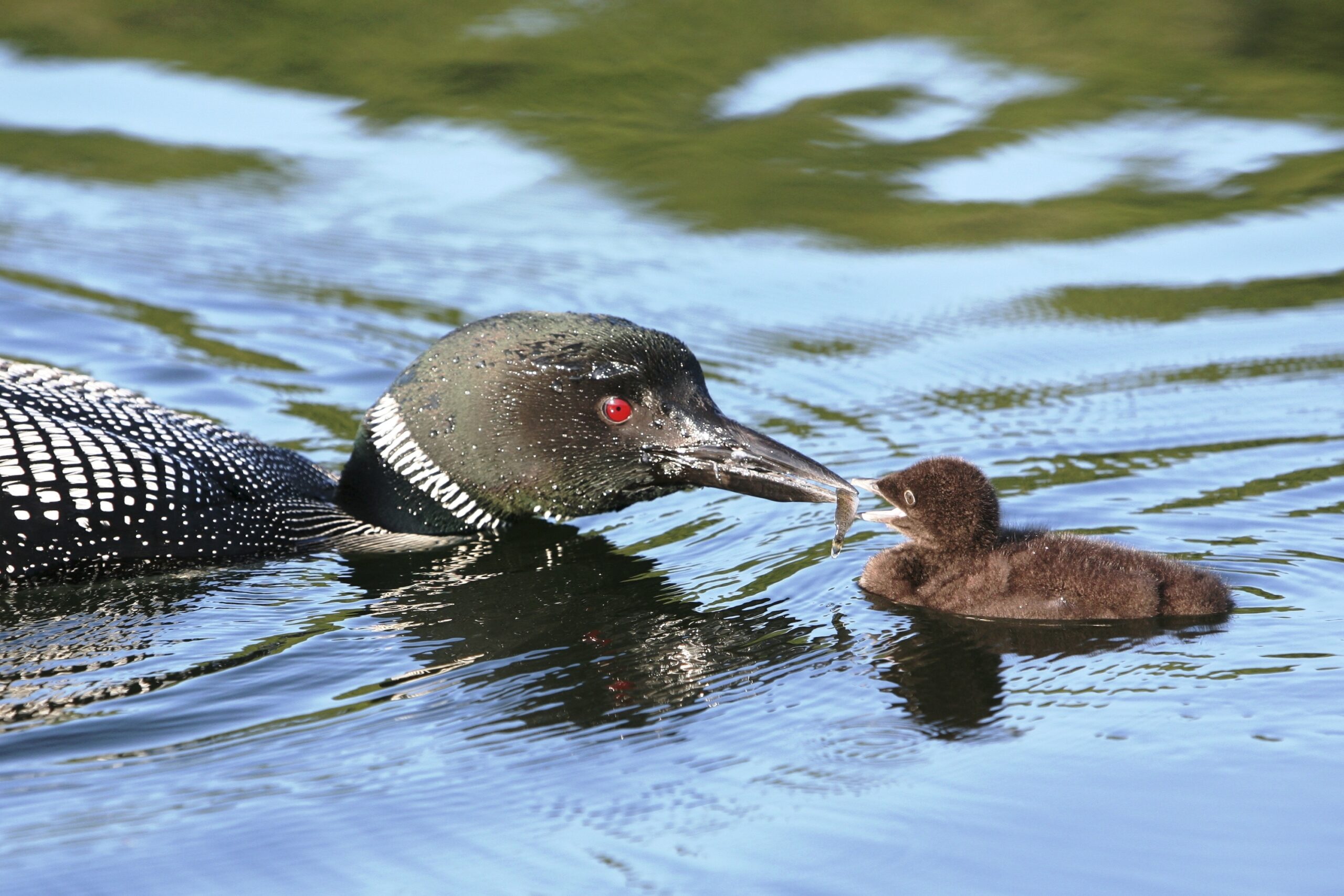
FALMOUTH, Maine — On Saturday, July 15, Maine Audubon will conduct its 34th annual Loon Count. That morning, over 850 volunteers will survey lakes and ponds across the state, counting loons and collecting valuable scientific data that informs and supports conservation efforts.
This year’s count takes place from 7 to 7:30 a.m. Counters are assigned areas to count from shore or by boat, and regional coordinators will compile the results and send them to Maine Audubon.
“Loons are one of the best indicators of lake health, because they depend on lakes with clean, clear water and lots of fish,” said Susan Gallo, director of the Maine Loon Project. “A lake that’s good for loons is good for everyone — all kinds of wildlife, as well as for people, too.”
“This annual count has helped build public awareness about the important role these iconic birds play in Maine,” Gallo said. “The data it yields has also built critical support for laws that keep our lakes and loons healthy, including regulations around lead free tackle, shoreline development, and invasive plants.
“Not to mention that, for 34 years, the count has been a great way to get people outside onto Maine’s lakes, learning about where loons are, where they nest, and how easy it is to share a lake with a loon family,” she said.
The count is the centerpiece of the Maine Loon Project. Through the project, Maine Audubon actively engages people in conservation, provides education about loon biology and collects scientific data to advocate for public policies that benefit loons and the lakes where they live.
During last year’s count, nearly 900 volunteers surveyed 304 Maine lakes and ponds. Although the population of adults was about 7 percent lower than the average of the previous five years (3,069), but the estimate for chicks in 2016 was a 76 percent increase over 2015, the third highest chick estimate on record.
Gallo credits the success of adult loons in part to the efforts of lake associations, landowners and Maine lawmakers, who have all created conditions for cleaner water and healthier fish populations in Maine lakes and ponds. Lake visitors and boaters play an important role in letting loons thrive, by keeping boat speed down and by watching loons and their chicks from a distance.
“Loon nests are located right on the shoreline, so they are very sensitive to changes in water levels,” says Gallo. “A heavy rainstorm, or wake from a boat going too fast too close to shore, can flood their nests, and eggs literally wash away. We’re coming into the busiest time of year on lakes, so it’s important for people to give loons room and follow Maine’s headway speed law when they are within 200 feet of shore.”
This year, loon counters and others interested in conservation can also join two other projects: The Signs of the Seasons phenology program is looking for volunteers to monitor loons and their chicks throughout the summer, and the Maine Lakes Society has created a Loon Smart Award for homeowners enrolled in their Lake Smart program. Visit www.maineaudubon.org/loons for more information.
For more information about the Maine Loon Project, contact Annica McGuirk at (207) 781-2330 ext. 219 or amcguirk@maineaudubon.org.







